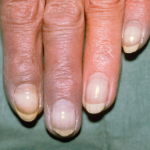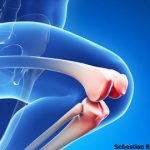(Reuters Health)—Patients with a degenerative meniscus tear who get arthroscopic partial meniscectomy have similar five-year outcomes and increased risk of radiographic knee osteoarthritis (OA) as without surgery, a small study suggests.
Researchers in Finland randomly assigned 146 adults with degenerative meniscus tear confirmed by magnetic resonance imaging (MRI) to receive either arthroscopic partial meniscectomy (APM) or diagnostic knee arthroscopy that served as a placebo surgery.
After five years, there were no relevant differences between APM and placebo surgery for three primary outcomes reported by patients: Western Ontario Meniscal Evaluation Tool (WOMET) (adjusted absolute mean difference -1.7); Lysholm knee score (adjusted absolute mean difference -2.1); and knee joint pain following exercise (adjusted absolute mean difference -0.04).
Five years after surgery 72% of the APM group and 60% of the placebo surgery group also had at least one grade progression in radiographic tibiofemoral knee osteoarthritis (adjusted absolute risk difference in increase in Kellgren-Lawrence grade >1 of 13%).
“In addition to not providing symptom-relief, APM seems to cause harm in the form of slightly accelerating the progression of knee osteoarthritis,” says senior study author Teppo Jarvinen, MD, PhD, of the department of orthopedics and traumatology, University of Helsinki and Helsinki University Hospital.
“We are talking about one of the most common surgeries in the world,” Dr. Jarvinen says by email. “So, if it proves to be just sham or even harmful, that it is a big deal.”
Both groups improved in knee symptoms and function, without meaningful differences between groups, researchers report in the British Journal of Sports Medicine.1
Most patients in the APM and placebo groups were also satisfied with the outcomes (78% vs. 84%).
But more people with APM experienced mechanical symptoms (adjusted absolute difference 18%).
Limitations of the study include the unblinding of many participants due to persistent symptoms (11% APM vs. 12% placebo), as well as the subjective nature of radiographic assessment of knee OA, the study team notes.
Even so, the results underscore that orthopedic surgeons must take care to ensure that APM is medically necessary prior to performing these procedures, said Dr. Carlos Rodriguez-Merchan of the department of orthopedic surgery at La Paz University Hospital in Madrid.
“The optimal clinical care is to detect whether a particular patient of less than 50 years of age has had a traumatic accident in the knee before knee pain started,” Dr. Rodriguez-Merchan, who wasn’t involved in the study, says by email. “In this case, we must assume that he/she has a traumatic meniscal tear, and then, after confirmation with MRI, APM must be indicated with a high probability of success.”


